Nepal Is On Fire: Gen Z Protests Shake the Nation
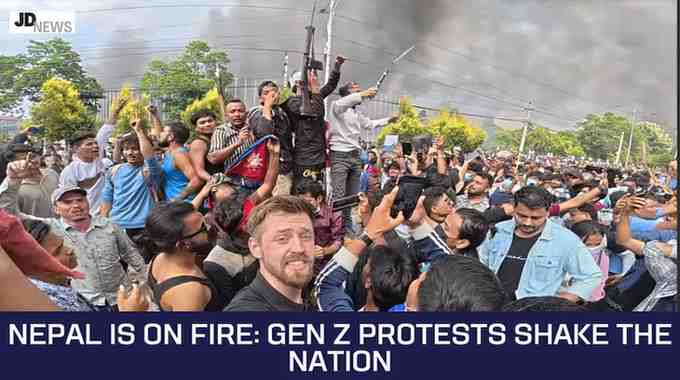
Nepal Is On Fire: Gen Z Protests Shake the Nation
A foreign youtuber who came to visit Nepal, whose channel name is @wehatethecold, without caring for his own life and risking his own life, has described the horrific scenes of Nepal and burning vehicles, bikes and burning government offices in his video blog. The anger of the youth is also visible. Along with this, people of India and other countries of the world are able to see the videos and videos being made by Nepal's influencers, be it Instagram reels or Facebook reels or YouTube shorts, in which videos and reels they are expressing their anger on the Nepal government and its corruption and social media ban and are calling for help from the country and the world and are also requesting the media to cover the news.

Kathmandu, September 2025 — Nepal is seeing one of its most severe waves of youth-led protests in recent years, with streets across major towns erupting in slogans, marches, and clashes with authorities. The movement, dubbed "Nepal Is on Fire" online, has been fueled by Gen Z's outrage about unemployment, corruption, and political stagnation, posing a challenge to the country's leadership.
A Generation That Refuses to Stay Silent
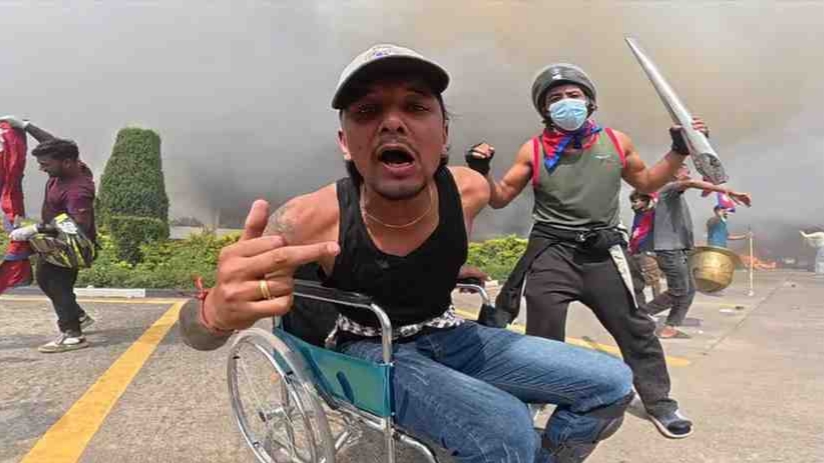
For many young Nepalis, this movement is more than just another round of protests; it is a declaration of frustration and optimism. Videos circulating on social media show enthusiastic crowds approaching police barricades, waving national flags, and demanding responsibility from politicians who they believe have failed to deliver on promises of security and prosperity. Hashtags such as #NepalProtests and #GenZRevolt have trended across platforms, elevating the voices of young residents who want to take control of their future.
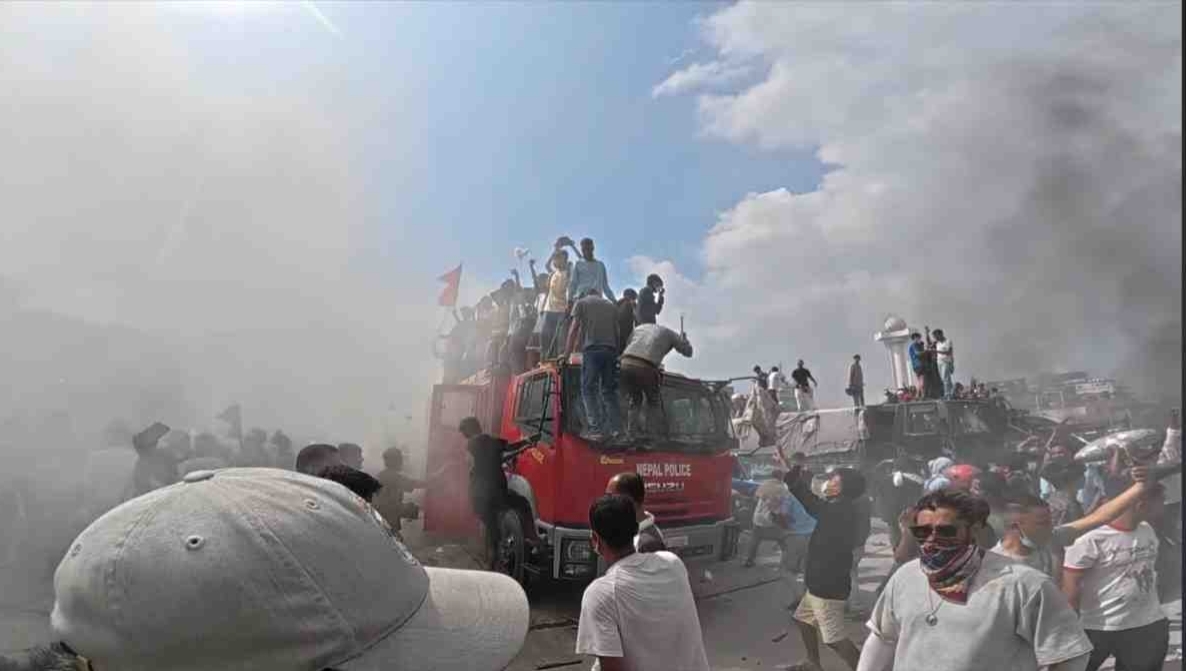
Observers note that this generation, nurtured in the shadow of Nepal's long-standing political turbulence, is no longer willing to wait for reforms. Instead, they are turning their rage into public protests, representing a broader yearning for structural change that transcends party politics.
Escalation and Unrest on the Streets
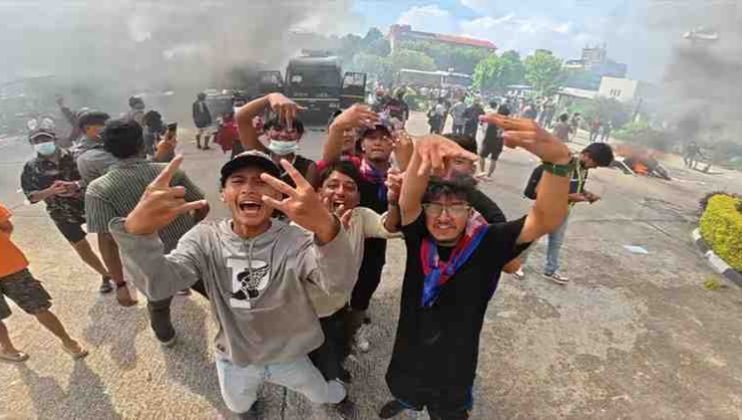
The protests have intensified significantly in recent days. Viral footage shows burnt barricades, damaged workplaces, and allegations of mobs targeting the homes of prominent political figures. Although government confirmation of such instances is limited, the magnitude of destruction captured on film demonstrates the increasing volatility. Analysts warn that without meaningful engagement, the protests might escalate into larger-scale violence, further weakening Nepal's fragile governance.
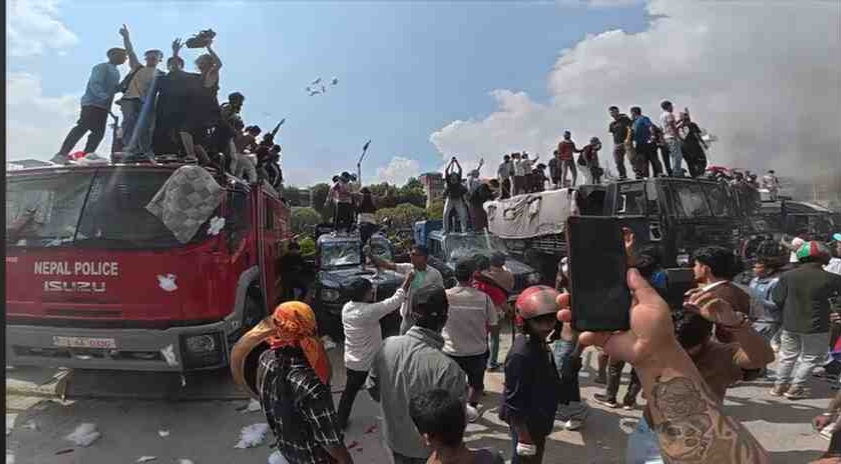
Authorities have responded by sending security troops to hotspots including as Kathmandu, Pokhara, and Biratnagar. Tensions between demonstrators and police are still high, with intermittent skirmishes reported. The administration has yet to provide a thorough response, but appeals for calm are expected in the coming days.
Symbol of a Larger Political Struggle

While the protests appear to be spontaneous, they stem from years of simmering resentment among Nepal's youth. Inflation, growing unemployment, and rampant corruption have all contributed to disenchantment among young Nepalis, making them wary of established political institutions. Commentators refer to this as a generational rebellion, one that might either open the path for reform or exacerbate the country's divisions. Given Nepal's strategic importance to India and China, international observers are intently monitoring the upheaval. According to regional observers, prolonged instability in South Asia might have far-reaching consequences, notably in terms of migration, security, and economic ties.
What Lies Ahead?

The major question now is whether Nepal's leadership will respond meaningfully to Gen Z demands or use state force to quash the uprising. If ignored, the protests might grow into a more organized movement, altering the country's political landscape. Nepal is currently at a crossroads, with its younger generation determined to create a new chapter in the country's future—one marked by accountability, opportunity, and hope.
Disclaimer The information in this article is compiled from reliable news outlets including The Hindu, Times of India, CNN, and Reuters. While every effort has been made to ensure accuracy, readers are advised to cross-check facts before making conclusions. JDBulletin is committed to delivering factual, unbiased, and well-researched news.